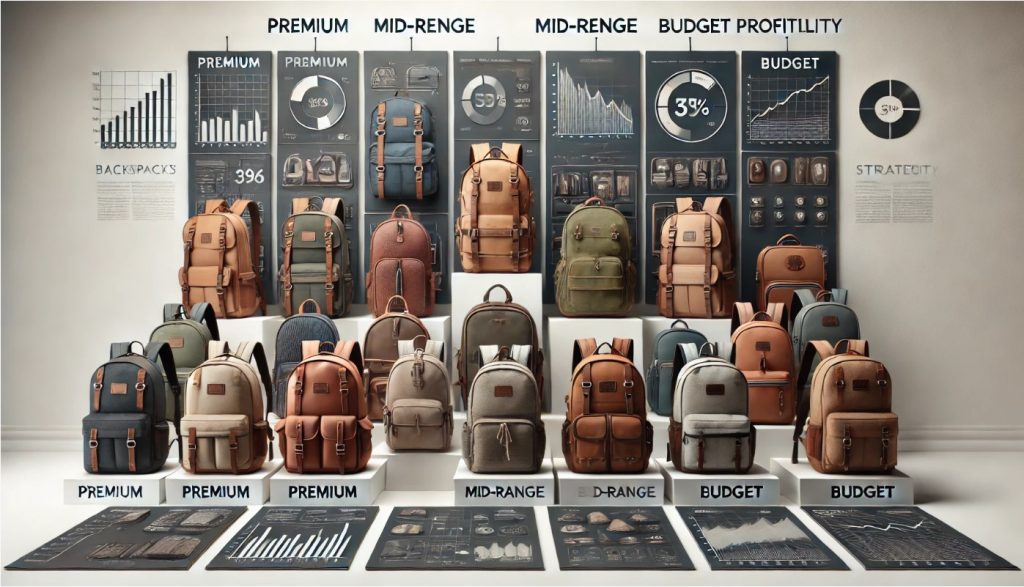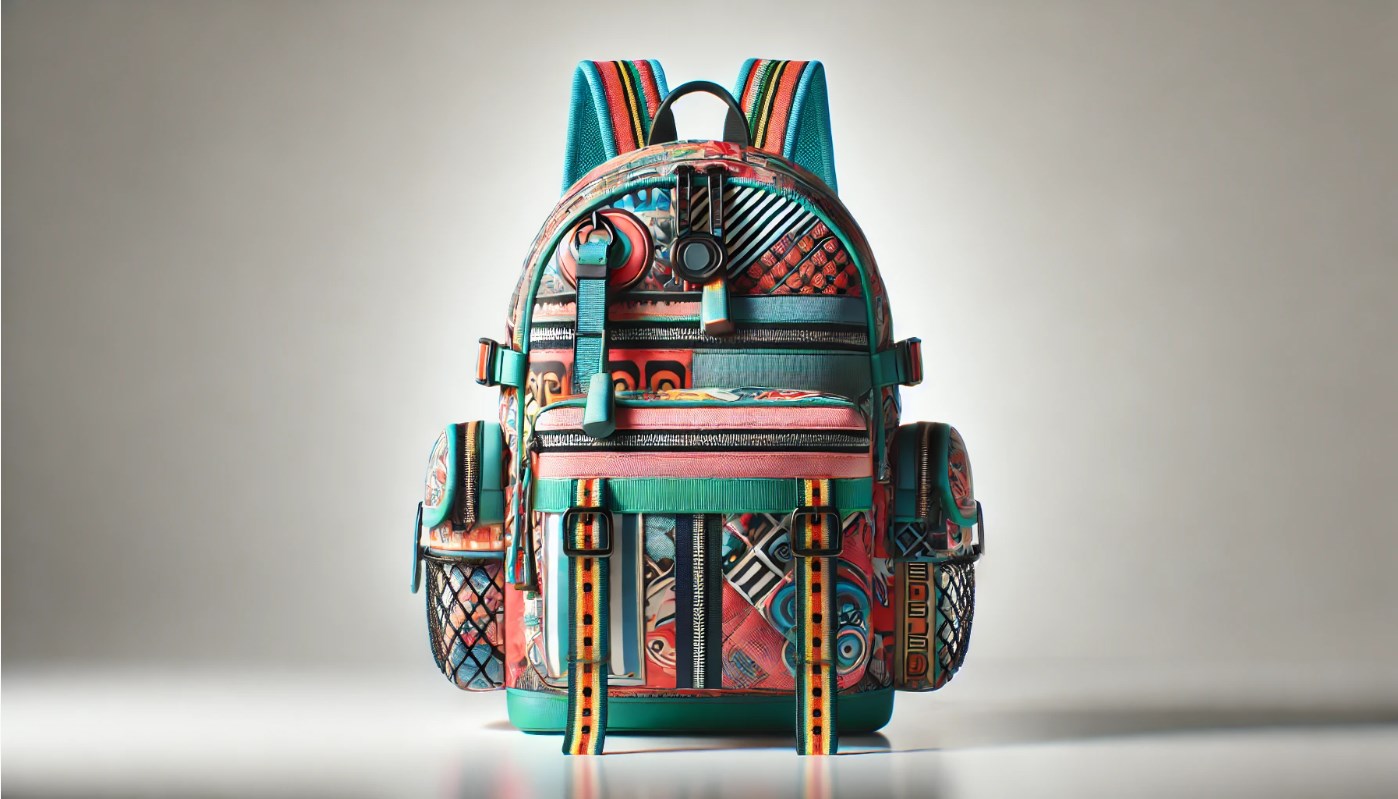Pricing is one of the most critical decisions a backpack brand can make when it comes to driving profitability and long-term success. The right pricing strategy can make the difference between gaining market share, building a loyal customer base, and struggling to maintain relevance in a competitive market. The process of setting the ideal price involves a combination of understanding production costs, customer behavior, competitor pricing, and market demand.
Cost Structure
Calculating Direct Costs
The first step in pricing your backpacks is understanding the full scope of your direct costs. These are the expenses directly tied to producing each unit and are crucial in determining your break-even point. Direct costs include materials, labor, and manufacturing overheads. To calculate the cost of each backpack, you need to sum up all these components:
- Materials Costs: The raw materials required to make a backpack (e.g., fabric, zippers, buckles, straps, padding).
- Labor Costs: The wages of the workers involved in the production of each backpack, whether in-house or through an outsourced manufacturing partner.
- Manufacturing Overhead: Costs that are necessary for production but are not directly linked to a specific backpack, such as factory rent, utilities, and equipment depreciation.
By determining these costs, you can establish a baseline price that ensures each backpack is profitable.
Indirect Costs
While direct costs are crucial, you also need to account for indirect costs associated with running your backpack business. These costs can include marketing, distribution, overheads, and administrative expenses. Though these costs are not directly tied to the production of a backpack, they are critical in understanding the true cost of doing business:
- Marketing and Advertising: The cost of promoting your backpacks across various channels (online ads, social media, influencers, etc.).
- Shipping and Distribution: The cost of getting your product from the manufacturer to the consumer, including packaging, transportation, and delivery charges.
- Operating Costs: Rent, utilities, and other ongoing costs of running your business, whether it’s an office or warehouse.
- Technology and Software: Tools for inventory management, e-commerce platforms, customer relationship management (CRM), and email marketing software.
Your pricing strategy should include a portion of these indirect costs in addition to the direct production costs to ensure all aspects of your business are profitable.
Analyzing Competitor Pricing
Market Research: What Are Your Competitors Charging?
One of the most significant factors in pricing your backpacks is understanding what your competitors are charging for similar products. Competitor pricing not only helps you gauge market standards but also positions your product within a certain price range relative to other brands. If you’re offering premium backpacks, for instance, your price should reflect the quality and features of your products compared to other high-end brands in the market.
Pricing Models in the Backpack Industry
In the backpack industry, you’ll often encounter several pricing models:
- Penetration Pricing: This is the strategy of pricing your backpacks lower than competitors initially to quickly gain market share and build brand awareness. After establishing a customer base, prices can be gradually increased.
- Premium Pricing: This involves setting your price higher than competitors, focusing on quality, features, or brand exclusivity. Premium-priced backpacks usually target high-end customers looking for unique designs or exceptional functionality.
- Economy Pricing: This model involves setting lower prices to appeal to price-sensitive customers. Economy backpacks focus on affordability over features or aesthetics.
- Price Skimming: If you’re releasing a new, innovative backpack or a limited-edition collection, you may initially price it higher and gradually lower the price as the product becomes more mainstream.
By understanding these different pricing strategies and observing how competitors price their products, you can decide which approach works best for your brand and target market.
Monitoring Competitor Adjustments
Pricing in the backpack market is dynamic and subject to change based on consumer trends, production costs, and competitor actions. Regularly monitor your competitors’ prices to stay informed about shifts in the market. You can use this information to adjust your pricing accordingly, either by staying competitive or differentiating your brand through added value.
Understanding Your Target Market
Customer Research: What Are Your Customers Willing to Pay?
To set a price that aligns with consumer expectations, it’s crucial to understand your target market. Conduct market research to determine how much customers are willing to pay for the features and benefits your backpacks offer. This can involve:
- Surveys and Focus Groups: Asking potential customers about their pricing preferences and perceptions of value.
- Customer Interviews: Direct discussions with your existing customers can offer insight into how they value your backpacks and what factors influence their purchasing decisions.
- Price Sensitivity Analysis: Determine how sensitive your customers are to price changes. If your target audience is more price-conscious, you may need to adjust your price point accordingly.
By understanding how your customers perceive value, you can better price your backpacks to match their expectations and willingness to pay.
Segmenting Your Market for Different Price Points
Customer segmentation can help you create multiple price tiers for different groups of consumers. For example, you may have premium products for customers seeking high-end, feature-rich backpacks, while also offering more affordable options for budget-conscious buyers. Offering backpacks at different price points helps expand your reach and cater to various customer needs without alienating any segment.
- Price-Sensitive Segment: For customers looking for basic backpacks at affordable prices, focus on essential features like durability, functionality, and simplicity.
- Mid-Tier Segment: For customers willing to spend a little more for added features such as ergonomic designs, additional compartments, or eco-friendly materials.
- Premium Segment: For customers who prioritize quality, durability, and design, offering premium backpacks with advanced features and high-end materials.
Psychographics: Aligning Price with Customer Values
Psychographics refer to the lifestyle, values, and preferences of your customers. For example, customers who value sustainability may be willing to pay a premium for eco-friendly backpacks made from recycled materials. Understanding your customers’ underlying values and aligning your price with those values is key to justifying a higher or lower price.
Applying Pricing Strategies
Cost-Plus Pricing: Adding a Markup to Your Costs
One common pricing strategy is cost-plus pricing, where you determine your production costs and then add a markup to arrive at your final price. The markup will depend on your desired profit margin. This approach is simple and ensures you cover your costs while still achieving profitability.
Example:
If your direct production cost for a backpack is $20, and you want to achieve a 50% profit margin, you would price the backpack at $30 ($20 x 1.50).
Value-Based Pricing: Pricing Based on Perceived Value
Value-based pricing is a strategy where you set your prices based on the perceived value your backpacks offer to customers, rather than simply factoring in production costs. If your backpack brand offers premium materials, unique designs, or additional functionalities (e.g., anti-theft features or built-in charging ports), customers may be willing to pay a premium for those added benefits.
This approach requires a deep understanding of your target audience and how they value the specific attributes of your backpacks. If customers perceive significant value in your product, you can command higher prices, even if your production costs are relatively low.
Psychological Pricing: Using Price to Influence Perception
Psychological pricing takes advantage of consumer behavior to influence buying decisions. Small tweaks to your price can have a big impact on how customers perceive your brand and the value of your products.
- Charm Pricing: Using prices like $49.99 instead of $50. The “9” at the end of the price makes it appear more affordable.
- Prestige Pricing: Pricing your backpacks at a round number (e.g., $100) to signal quality and exclusivity, rather than using lower prices that might imply budget products.
- Bundling: Offering multiple backpacks or accessories as a bundle at a discounted rate. This strategy can increase the average order value by encouraging customers to buy more.
Dynamic Pricing: Adjusting Prices Based on Demand
Dynamic pricing allows you to adjust your backpack prices based on real-time demand. For example, during peak seasons like back-to-school or the holidays, you might raise your prices slightly due to increased demand. Alternatively, you could offer discounts or promotional prices during slower sales periods to stimulate interest.
Discount Pricing: Encouraging Sales through Promotions
Offering periodic discounts, seasonal sales, or limited-time promotions is another way to influence your pricing strategy. However, it’s important to ensure that your discounts don’t erode your profit margins. Setting clear guidelines for when and how to offer discounts will help you avoid underpricing your products while still attracting budget-conscious customers.
Leveraging Technology for Pricing Decisions
Price Optimization Software
There are several pricing optimization tools available that can help you analyze your costs, competitor prices, and market demand to set optimal prices for your backpacks. These tools use data analytics and algorithms to recommend the best price points based on various factors, helping you maximize profitability and stay competitive in the market.
A/B Testing for Price Sensitivity
A/B testing isn’t just for email campaigns or website designs; it can also be used to test different price points and gauge customer reactions. By testing different price levels and analyzing conversion rates, you can determine the price that yields the best combination of sales volume and profit margin.
Pricing your backpacks for maximum profitability requires careful consideration of production costs, competitor prices, customer preferences, and psychological pricing strategies. By understanding your cost structure, analyzing market trends, and applying the right pricing strategies, you can position your backpack brand for long-term success in a competitive marketplace. Whether you’re targeting price-sensitive consumers or aiming for a premium market, the right pricing approach can help you achieve your financial goals while maintaining customer satisfaction and loyalty.







